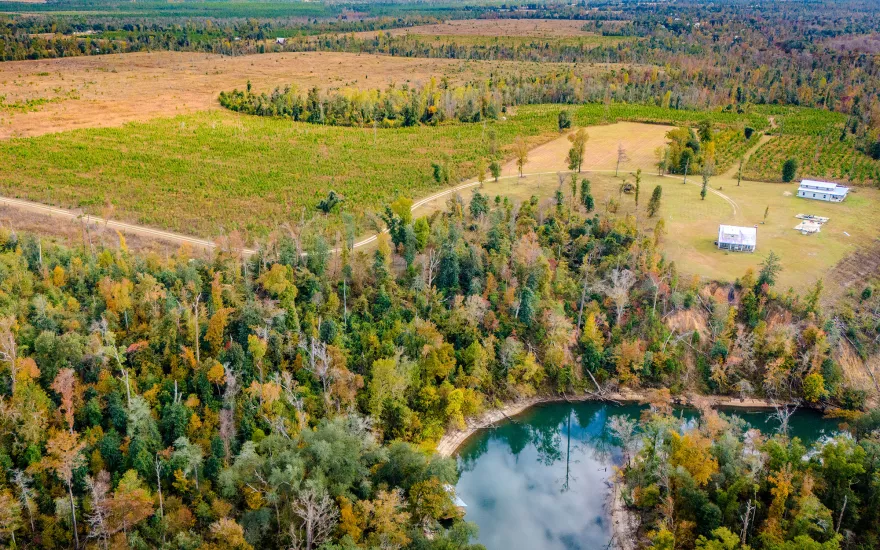Forests are disappearing at an alarming rate around the globe. Reforestation is one of the simplest and most critical things we can do to grow hope for the planet.
Trees are an important part of the solution to many of our world’s problems — from cleaner water to wildlife habitat preservation to combating a shifting climate. Together, we can plant at a scale that meets a changing world.
Trees are needed now
Home to 1.6 billion people and 80% of all plant and animal species, our world’s forests are the cornerstone of life itself. They provide us with countless benefits — some of which you might not even realize.
Cleaner water and air
Forests help improve water quality in streams, rivers, and lakes, as well as filter pollutants out of the air.
Carbon sequestration
Trees are one of our greatest weapons in the fight against climate change. In the United States, national forests alone absorb more than 50 million metric tons of carbon each year.
Climate regulation
Forests increase rainfall, prevent drought, and cool the overall temperature of the planet.
Habitat for wildlife
Animal species of all kinds rely on forests for food, shelter, and water.
Food security
Fruit and nut trees are an important food source for millions of people across the globe.
Recreation and wellness
From camping to fishing to hiking, forests provide us with opportunities to connect with nature and one another.
Our Reforestation Work
Together with our network of planting partners, we've planted millions of trees in forests across geographies, soil types, climates, and countries — and we’re just getting started.
Featured Projects

Amazon Rain Forest
The Amazon Rain Forest is one of the most diverse, important areas on Earth. Spanning nine countries and 3.4 million square miles, it produces more than 20% of the world's oxygen, plays a vital role in carbon sequestration, and is home to thousands of rare plant and animal species.
Despite its importance, the Amazon is disappearing at a rapid rate. Scientists have estimated that the area could become a grassland savannah in just 50 years. To aid in this crisis, the Arbor Day Foundation is planting nearly half a million trees in the rain forest in Brazil. This will provide long-term food security and income alternatives for thousands of indigenous people while helping save a precious natural resource.

Angeles National Forest
Spanning 700,000 acres, Angeles National Forests serves as an important source of water for the nearly 4 million Los Angeles residents. It’s also home to rare tree species like the Bigcone Douglas-fir.
Unfortunately, this precious forest has experienced several large wildfires in the past few years, including in 2020 when 23% of the forest was left in ashes. The Arbor Day Foundation is working with the U.S. Forest Service to restore the area, planting thousands of native trees and rebuilding critical wildlife habitat.

Eastern Queensland, Australia
The eastern edge of Queensland, Australia is known for its stunning views and exotic wildlife. The region is home to the Gold Coast, the Great Barrier Reef, and endangered species like turtles, wallabies, kangaroos, wombats, and koalas.
As beautiful as it is, many forested areas in Queensland have been cleared for surface mining and agricultural use. This has resulted in frequent flooding, erosion issues, and forest fragmentation. The Arbor Day Foundation is helping plant trees to return the area to its native state. Doing so will create jobs, boost ecosystem resilience, improve water quality leading to the Great Barrier Reef, and provide better habitat for the country’s rare and wonderful animals.

Chesapeake Bay
Stretching 64,000 square miles, Chesapeake Bay contains more than 100,000 rivers and streams and supports 18+ million people and 3,600 species of plants and animals. It’s also an economic hub for a numerous fisheries.
Sadly, the incredibly beautiful area is becoming increasingly polluted by agricultural and urban runoff, particularly in Pennsylvania. In 2021, the Arbor Day Foundation teamed up with the Chesapeake Bay Foundation to plant more than 60,000 trees in Pennsylvania. The project has resulted in cleaner water, stabilized stream banks, and re-established wildlife habitat.

Madagascar
There are few places on this planet as biodiverse-rich as Madagascar. Its rainforest is the one and only home to ring-tailed lemurs. The island country is also home to 28 million people, the majority of whom depend on agriculture for their livelihood.
Over time, logging and slash-and-burn practices have destroyed roughly 80% of the forest biome, devastating the lemur’s habitat and placing it on the most endangered species list. In 2021, the Arbor Day Foundation worked with Omaha’s Henry Doorly Zoo and Aquarium and the Madagascar Biodiversity Partnership to plant nearly half a million seedlings across that landscape, growing habitat, home, and resilience.
Meet this moment with trees and action
Eighty-eight percent of Americans know trees play a role in slowing climate change. But that can only happen if they're planted now and at a major scale. That's why we need everyone who can see a better future, to plant it.







